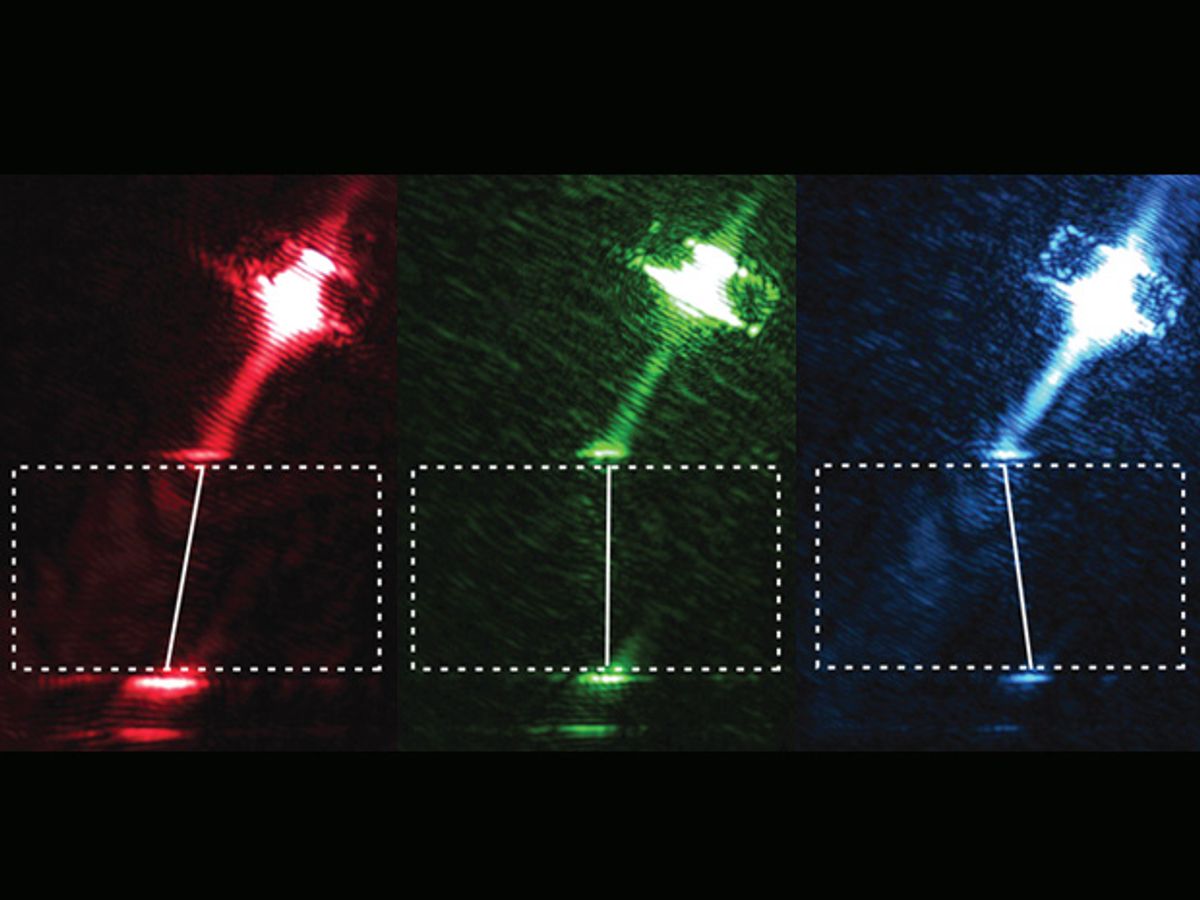A material that manipulates light in unusual ways could lead to a whole variety of exotic devices, including microscopes capable of seeing inside cells, optical circuits for quantum computers, and invisibility cloaks.
The material in question is a hyperbolic metasurface, a two-dimensional type of metamaterial with a negative index of refraction that bends light in directions it would not normally travel, sending it along a hyperbola rather than an ellipse. One difficulty with metamaterials is that they often contain metals that absorb photons, limiting the distance light can travel to a few hundred nanometers. Diffraction, in which light bends around objects in its path, can also distort a lightwave in a metamaterial, limiting the reach of a light-based signal.
This new metasurface overcomes the distance problem by sending light along the surface of a metal grating rather than through it, avoiding absorption. Harvard chemistry and physics professor Hongkun Park and his team describe the metasurface in the current issue of Nature.
They started by growing a single crystal of silver on top of a piece of silicon; then they used plasma to etch a grating into the silver. When they shone a laser onto the grating, surface plasmon polaritons—oscillations of electron density—formed at the interface of the silver and surrounding air, carrying the light along. The single crystal meant the surface was so smooth that there were no defects to absorb the light. The team’s new technique increased the propagation distance of the light by two orders or magnitude, Park says. The light was also free of diffraction, which means it could be used to image objects much smaller than its wavelength.
Alexander High, a postdoctoral research in Park’s group, says the metasurface is relatively easy to build. “There’s no single aspect of it that is incredibly challenging or difficult to implement,” he says.
The hyperbolic metasurface gives new levels of control over the propagation of light. The size of the grating determines which wavelengths are negatively refracted, so the metasurface can be used to route light depending on its wavelength. It also makes possible control of light through a property of quantum mechanics known as spin. Such spin control would allow the direction of light to be switched by applying a magnetic field. Finally, it provides a way of delivering light to other tiny optical elements, such as quantum dots.
It even gives fine-grained enough control that it would be possible to build single-photon transitors. Such devices could be elements of a quantum computer. What’s more, the new metasurface is a step further on the road to invisibility cloaks; most of the demonstrations of optical cloaking have been at infrared or microwave wavelengths, whereas this would bring it into the visible spectrum. “There are lots of different possibilities,” Park says.
Neil Savage is a freelance science and technology writer based in Lowell, Mass., and a frequent contributor to IEEE Spectrum. His topics of interest include photonics, physics, computing, materials science, and semiconductors. His most recent article, “Tiny Satellites Could Distribute Quantum Keys,” describes an experiment in which cryptographic keys were distributed from satellites released from the International Space Station. He serves on the steering committee of New England Science Writers.



